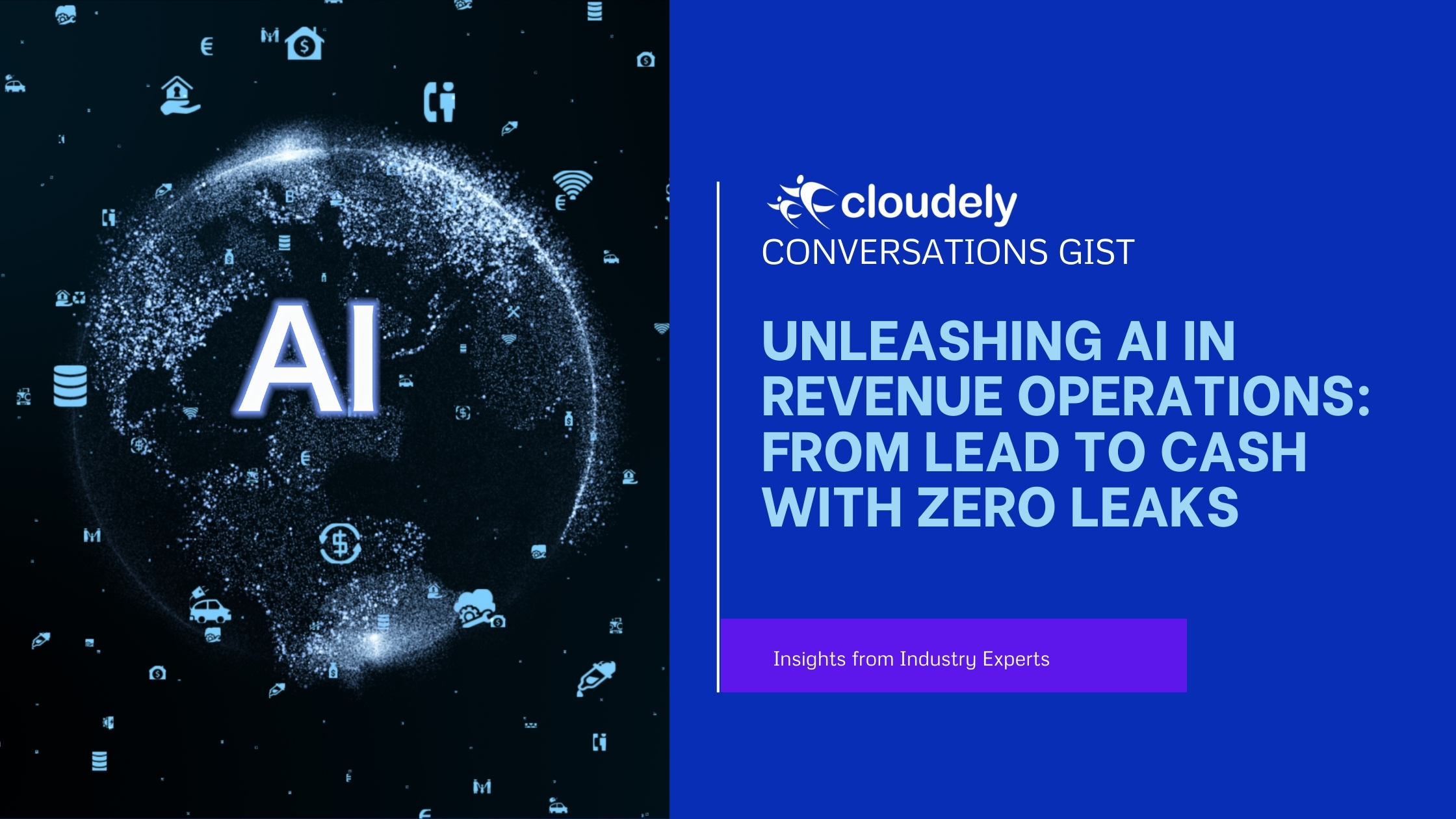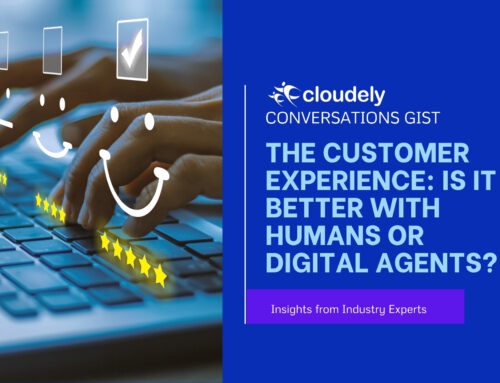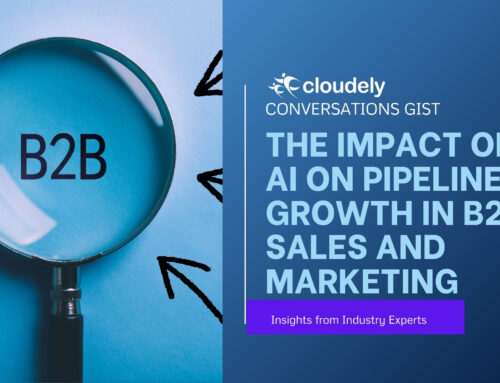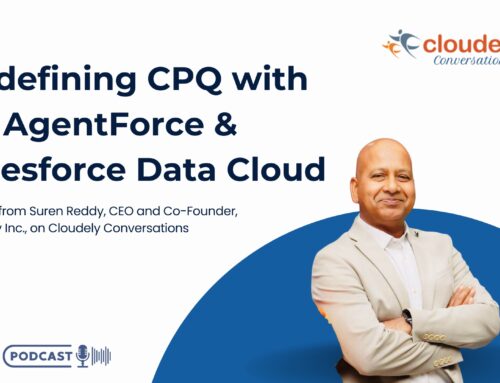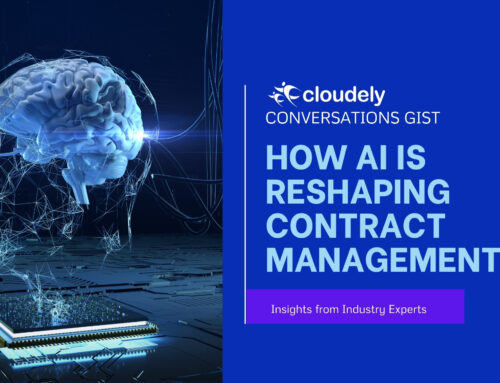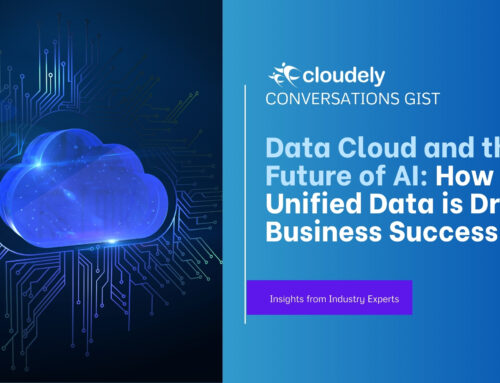It’s 2 o’clock Central, noon Pacific, and the Cloudy Conversations podcast is live. Host Eric Dreshfield, a longtime Salesforce MVP and community leader, kicks off the session with a warm welcome. Today’s guest is Niraj Itan, who has spent more than 12 years implementing CPQ (Configure, Price, Quote) and CLM (Contract Lifecycle Management) solutions for over 50 customers.
The topic? How artificial intelligence is changing the lead-to-cash process—and what that means for revenue operations, contract management, and ROI.
Table of Contents
What is Lead-to-Cash, Really?
Niraj starts by breaking it down:
Lead-to-Cash is the entire journey from capturing a lead in marketing, to engaging with the customer in sales, to configuring and pricing solutions with CPQ, then moving through contract negotiations with CLM, on to billing, and finally, revenue recognition.
Product-to-Cash, on the other hand, is narrower—focused mostly on product configuration and fulfillment.
Eric notes that with so many moving parts, it sounds like inefficiencies are almost built in. Niraj agrees. He explains that customers typically fall into three maturity levels:
- Level 1: Still using spreadsheets and Word docs—highly inefficient.
- Level 2: Using tools, but they’re siloed and don’t talk to each other.
- Level 3: End-to-end systems in place, but processes are still clunky.
The fix? Start by getting everyone—sales, marketing, finance, and legal—in the same room. Map the entire process at a high level. Then, implement piece by piece with an eye toward full integration.
Where AI Fits In
Eric asks where AI could help. Niraj lights up—this is “the talk of the town.”
He explains: companies want deal velocity—selling faster—but speed alone isn’t enough. You also need accuracy: correct pricing, proper approvals, and contracts that manage risk. AI is making an impact in several areas:
- Forecasting: Predicting the likelihood of winning opportunities.
- Pricing: Recommending the right price and discounts.
- Contracts: Extracting key terms, identifying risks, and flagging red flags across thousands of agreements.
Previously, this work was manual or impossible at scale. Now, AI can surface insights in seconds.
Eric points out the big advantage: speed. Niraj adds that during mergers and acquisitions, when companies need to review thousands of contracts quickly, AI is invaluable.
AI as Co-Pilot, Not Pilot
But can AI be trusted to run the show?
Niraj is clear: not yet. AI today is a co-pilot. It can accelerate work, but humans must make the final decisions. Legal teams, sales managers, and finance leaders need to review AI outputs until confidence is built.
The key is governance—defining clear boundaries for what AI can and cannot do, and always keeping a human in the loop.
ROI and Measuring Success
Implementing AI requires investment, so where’s the return?
Niraj suggests measuring cycle times—how long contracts take to move from one stage to another, where bottlenecks occur, and how AI reduces delays. For example, if contracts are stuck in review, AI can summarize terms, highlight risks, and cut down that stage significantly. The result? Faster deal closure, reduced manual errors, and fewer missed renewals.
The System of Record Question
Eric raises a tricky point: with so many systems (CRM, CPQ, CLM, ERP), where’s the single source of truth?
Niraj explains there isn’t just one. Data flows and is enriched at each stage. In opportunities, the CRM holds the truth. For pricing, CPQ is the record. For contract terms, CLM is the system of record. Each module owns the data for its stage, but together they form a single journey.
Predictive Deal Desk and Forecasting
The discussion turns to predictive deal desks. Niraj says AI can review documents, compare them with company policies, and flag whether a deal complies—speeding up approvals and reducing risk.
On forecasting, he notes AI is especially powerful: feeding historical data into AI systems allows companies to predict deal flow and revenue with greater accuracy. The caveat is data privacy. Many businesses prefer closed-loop AI systems that keep data in-house rather than sending it to public platforms.
Best Practices for AI in Lead-to-Cash
As the session wraps, Eric asks Niraj for best practices. Niraj sums it up in three steps:
- Define robust processes for the future—think 3–5 years ahead, not just today.
- Choose end-to-end solutions rather than patching siloed tools together.
- Balance speed with accuracy. Speed wins, but accuracy prevents costly mistakes.
Eric offers a final thought: AI in lead-to-cash isn’t just about automation—it’s about amplifying outcomes across sales, finance, and legal. Niraj agrees completely: this is the future of revenue operations.
Takeaway: AI won’t replace people in lead-to-cash—it will empower them. Companies that combine speed, accuracy, and human oversight will capture the biggest gains.

